#Soissons fossil
Explore tagged Tumblr posts
Photo

Fossil Foraminifera Nummulites laevigatus – Eocene Cuisian Stage, Aisne Valley France – Genuine with COA
Presenting an exquisite fossil specimen of the foraminifera Nummulites laevigatus, a prehistoric marine microorganism from the Eocene epoch. This fossil dates specifically to the Cuisian stage and was discovered in the Aisne Valley near Soissons, France – an area renowned for its well-preserved Paleogene fossils.
Nummulites are large, lenticular foraminifera that thrived in warm shallow seas around 50 million years ago. Their intricate calcareous shells, composed of numerous chambers, are highly prized by both amateur and professional collectors for their scientific importance and distinctive, coin-like appearance (from which the genus gets its name, derived from "nummulus," Latin for "little coin").
Item Details:
Species: Nummulites laevigatus (sometimes referred to as laengryus)
Age: Eocene Epoch, Cuisian stage (~50 million years old)
Location Found: Aisne Valley, Soissons, France
Condition: 100% genuine fossil specimen with exceptional preservation
Scale: Scale cube in photo is 1cm – please refer to image for full size
Photography: What you see is what you get – the exact specimen pictured is the one you will receive
Packaging: Secure and protective packaging
This fossil is an excellent addition to any collection of microfossils or paleontological specimens and is ideal for educational use, display, or gifting. It comes with a Certificate of Authenticity to verify its provenance and authenticity.
We take pride in selecting only high-quality, well-preserved fossils. Each item is handpicked to ensure it meets our rigorous standards.
#Nummulites fossil#foraminifera fossil#Eocene fossil#Cuisian stage#Aisne Valley fossil#Soissons fossil#French fossil#microfossil#marine fossil#fossil specimen#genuine fossil#fossil with certificate#fossil from France#fossil for collection#paleontology#natural history
0 notes
Photo

‘Teilhard: The Man, The Priest, The Scientist’ (1977) by Mary Lukas & Ellen Lukas. In June 1913 de Chardin explored the Cor-Magnon caves of northern Spain with its stylized paintings of bison, horses, mt. goats, with red & white tracings of human hands. Soon afterward he was in Piltdown, UK to inspect the pits, he was then only a student. In ‘53 the Piltdown Man would be proved a fraud, Charles Dawson being responsible. The next yr. in ‘14 while in tertianship to prepare for full status as a Jesuit WW I began. His brother George was killed in ’14 in the battle near Soissons. His older brother Alberic in the French Navy had already died in ’03 from advanced TB. De Chardin volunteered as a stretcher-bearer for a colonial regiment of N.A. Zouaves. While in ’17 he would be promoted to chaplain in the regiment. In ’18 his brother Oliver would be killed in action (the 3rd of his 5 brothers to die in service). De Chardin would be commended for sufficient gallantry to merit the Medaille Militaire. Later he would be exiled by the Jesuits to China, the longest being 7 yrs. (partly due to WW II). De Chardin would work on fossils with 2 Jesuits, Emile Licent in Tientsin & Pierre Leroy in Peking. He was urged to join the team of the Chinese Geological Survey which found Peking Man (later proven to be a woman). In China he would also be a part of the Citroen expedition in ’31. After WW II he would do fossil hunting in Africa & exiled to the US where he worked with a paleontological exploration society based in NYC. In ‘48 he was finally called to Rome to meet with the Jesuit Superior General. ‘One does not go to Rome for justice”, it has been said, ‘one goes to pray benevolence.’ His writings were never approved to be published in his lifetime. He did meet the ‘Sacred Monster of Thomism’ Fr. Reginald Garrigou-Lagrange, OP. The encounter was short. To the French Diplomat to the Vatican, he said: ‘There goes the man who wants to burn me.’ He died on Easter Sunday in NYC of a cerebral hemorrhage. When his sister Francaise was sad, he would remind her that she was ‘looking at the crucifix from the wrong side.’ https://www.instagram.com/p/CdZ7p7ROAc1/?igshid=NGJjMDIxMWI=
0 notes
Text
SUMMARY Dr. Jennifer Pailey brings her sister Lisa to the resort town of Snowfield, Colorado, a small ski resort village nestled in the Rocky Mountains where Jenny works as a doctor. Once in town, the sisters find no one around but a few corpses. At first their suspicions are that of a serial killer on the loose in town. The sisters stumble upon the severed heads of the town baker and his wife in an oven when they are found by Sheriff Bryce Hammond, a former FBI agent, and his deputies Stu Wargle and Steve Shanning. Hammond and his deputies are investigating the killings.
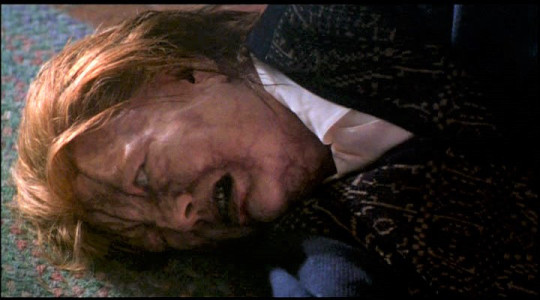
The group arrives at a nearby hotel and find the writing of a victim on the mirror reading “Timothy Flyte”. Shanning leaves to investigate a sound outside but doesn’t return. The others find only his gun, hat and shoes while the rest of him is gone. They return to the sheriff’s office to request aid and create roadblocks around Snowfield. The group gets a strange phone call but are interrupted by an attack by a bizarre moth-like creature that rips Wargle’s face off before Hammond is able to kill it. Lisa later encounters Wargle while in the bathroom. They quickly return to the morgue and find his body missing.
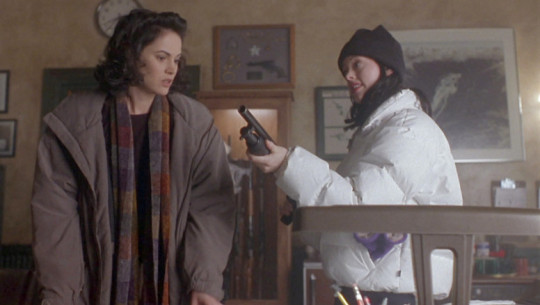
Hammond’s FBI associates find Flyte, a British academic who theorizes the town has fallen victim to the Ancient Enemy, an entity he generalizes as “chaos in the flesh”. It periodically wipes out civilizations including that of the Mayans and the Roanoke Island colonists.
They are soon joined by an Army commando unit and a group of scientists led by General Copperfield who has come to Snowfield. They, along with Flyte, investigate the town. The creature kills soldiers investigating the sewers, while a dog approaches Flyte and the scientists and transforms into a gruesome monster that converts the group, except for Flyte. Flyte regroups with Hammond, Jenny, Lisa, and Copperfield. The creature attacks Copperfield through a manhole, converting him. Copperfield vomits a sample before melting into a puddle of black liquid. Through it, Flyte and the group learn the nature of the Ancient Enemy.

Revealed to actually be an Earth-based amoebic life form that mimics its absorbed victims while gaining their knowledge, the Enemy creates Phantoms as temporary detachments for it to act through before absorbing them back into it. Furthermore, the Enemy absorbs all of the thoughts of its victims, making it extremely intelligent, and because of the previous civilizations’ perception of it, it believes itself to be a god. It had arranged all of the prior events so Flyte can assist the creature in revealing its existence to the world. Flyte also learns that the creature’s body is physiologically almost identical to crude oil, and could be killed by bacteria bio-engineered to ingest fossil fuels. They deduce that with the limited amount of the bacteria they have, they need to get the bacteria into the nucleus that is within the main body of the Enemy.
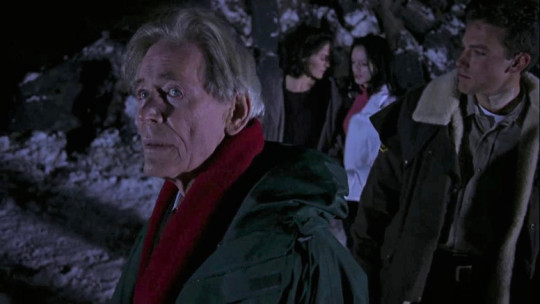
They form a plan to use the Ancient Enemy’s extreme arrogance and god complex against itself. To do so, Flyte acts as if he is turning against the group by revealing their entire plan to the Enemy. In anger (and believing itself indestructible due to being a god), it reabsorbs all the Phantoms and then emerges from the sewers to assume a Mother Mass form. Hammond and the Pailey sisters fire the bacteria into the Ancient Enemy before it retreats underground with Hammond in pursuit.
While the Pailey sisters find themselves dealing with Wargle’s Phantom, Jenny seemingly kills it with a gun containing the bacteria. Hammond finds the Ancient Enemy as it has assumed the form of the boy he accidentally killed during an FBI drug raid. When the boy grabs the last vial from him, Hammond shoots at it to expose the creature to its contents. It dies from the bacteria.
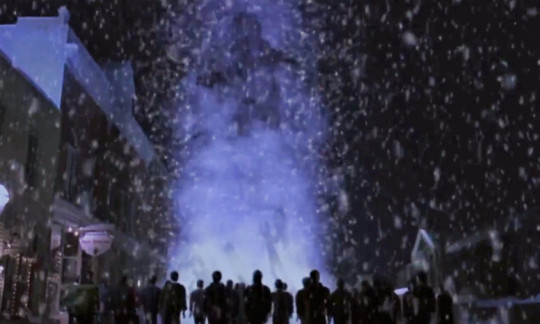
Though Hammond reassures Lisa and Jenny that it is gone, with the former stating the townsfolk are at peace, Flyte admits the Ancient Enemy did achieve its victory as he has decided to tell the world what happened with a book based on what occurred in Snowfield. Sometime later, watching Flyte being interviewed about his book, The Ancient Enemy, two bar patrons argue about the existence of alien life. Hearing laughter nearby, the patrons turn to see Wargle as he asks them if they want to see something interesting.
youtube
DEVELOPMENT/PRODUCTION The majority of PHANTOMS’ principal photography was shot in Colorado. Georgetown, with a population of just 900, stood in for Snowfield, and interiors were filmed in a huge warehouse in south Denver, formerly host of PERRY MASON and FATHER DOWLING MYSTERIES.
Co-producer Michael Leahy, who was made an Honorary Mayor of Georgetown, found the tiny mountain hamlet to be an ideal location for shooting the exterior Snowfield scenes. “We had all the production services that we need in Denver, just 35 minutes away. We had 75% to 80% local crews, which was important to us to try to do, not only as a cost-effective issue but also to try to spend some money here.”
“If you read the book,” Chappelle said, “then drive through Georgetown, you have to think that Dean Koontz was here—he saw this and wrote it.” But shooting a film at 8500 feet in October and November was a grueling endurance test. “It’s a night movie for the most part,” Chappelle said, “and we had three weeks in a row of hard nights. Shooting in twenty degree weather night after night, you’re out for twelve hours in the cold. It kind of beats you up a bit.” But Chappelle felt the production would be great enhanced by the look of the location, with the mountains looming over this Victorian town. One night we had real snow falling, and we were able to incorporate it. You can’t pay for that.”
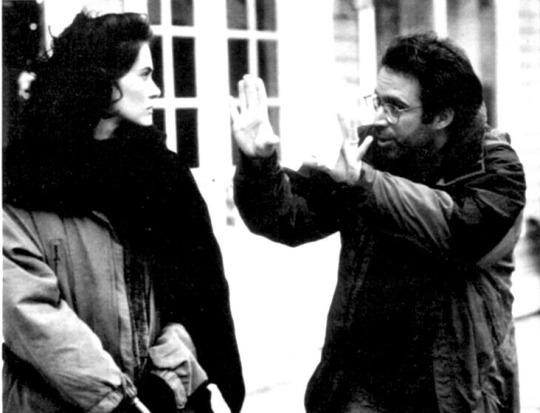
Interiors filmed in Denver included an authentic mountain town sheriff’s office, sewer tunnels where the Ancient Enemy lurks, and the interior of a government Chemical Biological Warfare Vehicle, or CBW, headquarters of an elite team brought in to investigate the Snowfield disappearances when the town is blockaded by the military. It was in Denver that O’Toole finished his scenes and returned to England in early December, while the rest of the cast and crew headed back to Hollywood for more effects shooting.
youtube
As for Executive Producer Koontz, he declined to visit the Colorado locations to watch the filming of his tale. “I heard he doesn’t like to fly,” Chappelle said. “But he’s seen some of the dailies, some of the cut footage, and as I understand it he’s very happy with what we’re doing so far. I know he’s had some bad experiences in the past. He’s not been happy with those, so hopefully this will be different.”
It was Koontz’ clever idea of joining actual historical mysteries to a fictional solution that grabbed Soisson a decade ago, and his enthusiasm for the project endured through the years of trying to get the project off the ground, right up to the final days of location shooting. “To me, this is the most fascinating critter I’ve ever been around,” he said of Koontz’ Ancient Enemy. “And that’s why, after pushing this uphill as long as we have, I’m still totally jazzed about PHANTOMS.”
Chappelle is enthusiastic about his cast, whom he believes brought a great deal to their roles and have elevated Phantoms above B-movie status-especially the always welcome O’Toole. “There is a section in this film where Flyte is describing all these actual historical mass disappearances, and it could have been read like a phone book,” the director says. “When Peter O’Toole is giving you this backstory, though, it’s fascinating. It’s like Edgar Allan Poe reading Shakespeare. Hearing him say those lines, you really want to know about the disappearance at Roanoke or what happened in China in 1939, when a whole army vanished overnight.” Another surprise for Chappelle was the absence of attitude from the cast-something he was convinced would happen once he moved up to bigger-budgeted films like this. “They were all into it,” the director says. “The interesting part was to watch the different styles of acting. You have Peter O’Toole coming out of that British Shakespearean background. His training is to come in prepared and know exactly what he’s doing. However, some of the younger actors have been taught that it’s a process of discovery. Ben Affleck is like that, and he and Peter had a couple of scenes together. So here you had O’Toole, who does two or three takes, nails it and wants to move on, while Ben wanted more time to explore the scene. But Peter was great and such a pro. He would do the takes with Ben and work it out. I loved the energy of all that.”
O’Toole plays Timothy Flyte, a rumpled Englishman bounced from Oxford because of his seemingly outlandish theories explaining mass disappearances throughout history. He’s slumming as a tabloid journalist when the startling news comes that his theory of man’s Ancient Enemy may hold more water than his detractors had thought.
Among the last scenes O’Toole was to complete before returning to England were those filmed on the Chemical Biological Warfare Vehicle set. It’s in the CBW that Flyte first communicates with the Ancient Enemy via computer. The creature ends the conversation by rocking the large van and everyone in it. O’Toole endured being shaken up for a whole afternoon.
The set was entirely enclosed, the action inside viewable only on the sound man’s monitor. More so than any of the other cast members, O’Toole’s famous voice burst forcefully through the walls of the CBW set to the listeners outside.
youtube
With every take of the scene where Flyte speculates on how the Ancient Enemy can interact and communicate through the computer, O’Toole gave meticulously identical line readings. There was no variation in the way he played it. Obviously, he’d long ago studied and decided how Flyte would utter his pronouncements. His delivery seemed consummately right-exactly the way you’d imagine Peter O’Toole would say his lines; indeed, should say them: with the careful, song-like inflection that has mesmerized audiences for decades.
After filming wrapped for the day, an obviously weary O’Toole graciously provided a few minutes to talk about PHANTOMS. “Forgive me if I’m not coherent,” he warned, “but it’s been a very long day. I’ve been muttering lots and lots of things about flatworms and biological substances and chemical warfare and on and on!” He made a face, as though tongue-tied. “And I’ve been shaken quite a lot today, too!”
Asked how he viewed his character, he responded, “That’s a matter which I could no more discuss than I could fly in the air. I understand it’s quite fashionable now to do this. But for me to do it would be to spit into vapor.”
O’Toole said he was amused by his character’s predicament. “He’s made wild claims no one buys into, and so he’s reduced-poor fellow-to working for the tabloids. Just to earn a shilling!” Flyte has ruined his academic career for a theory that’s unproven-until now. “He believes he has this knowledge,” O’Toole said. “The Ancient Enemy has never manifested itself before. And it’s the manifestation that really makes the film. This creature is responsible for these mass disappearances. It’s a fascinating historical phenomenon, and was completely new to me before I read the script.” The Colorado weather, which brought an additional level of creepiness to some of the outdoor scenes. As Soisson jokes, “Everyone was miserable, but it made the film look beautiful.” “We were fighting the snow continuity throughout the shoot,” adds Chappelle. “If it snowed earlier, we were screwed and had to fake it for the rest of the movie. So we dodged the snow bullet the whole time. There was this sequence where O’Toole had to deliver this challenge to the ‘ancient enemy.’ At that time, an incredible light snow fell through the whole sequence, and it was beautiful and eerie. This was his big monologue, and he was backlit with real snow falling. It was one of those things you could not plan. It sort of made the other three weeks of hell worth it. And in the dailies, it cut together rather well. It was one of those rare occasions where nature and the filmmaking process came together.”
Novelist Dean Koontz knows the adaptation drill all too well. You get a call from Hollywood, they want to buy the rights to your book, they give you loads of cash, you walk away and then something like Watchers gets made that doesn’t resemble a single word you’ve written.
youtube
“You always know when they buy the film rights that they’re going to change things radically, partly because few books can translate to film exactly as they’re written,” says Koontz. “Generally, if it can, it means that the book was too simplistic, because film is a much easier medium to fill two hours with.” ! This, of course, hasn’t stopped people from trying to adapt Koontz (whose books, ironically, have concepts that are more cinematic and translatable than even his direct competitor Stephen King). The result has been a mixed bag at best. “I have a theory,” says producer Joel (The Prophecy) Soisson regarding the failure of Koontz-based movies like Hideaway to live up to the promise of their premises. “I believe we all like to think we’re more clever than the novelist. So we change it and think we can make it a better movie than it was a book. And nothing I’ve ever seen as a movie has come close to what this guy has done in his novels. So it’s incredibly arrogant for me or anyone else to think we can actually make it better.”
Still, Koontz and his legion of faithful followers have had to witness some of his best work get butchered, while the author had very little say in the process. “You get used to the fact that when you make films, it’s not going to be the book,” the author sighs. “But you at least hope it’s going to be the spirit of the book.”
Which bring us to Phantoms, the cream of Koontz’s literary oeuvre. Anyone who has ever become a fan of the author usually cites it as the book that first got them hooked. It has also been the one Koontz novel that has floated around Hollywood circles for nearly 10 years, always seeming two seconds away from being committed to celluloid.
Now the wait is over and Phantoms will soon be hitting theaters, with Koontz on board as screenwriter and bearing a contract allowing him final approval of any changes the filmmakers wanted to make during principal photography. “That made it harder at first to get clearances if we wanted to change things,” admits director Joe Chappelle. “Then, when he saw the dailies and realized we weren’t going to destroy his script, he gave us carte blanche. He said, ‘If Joe and the actors want to work out something on set and revise it, it’s OK.’ So he gave us a lot of latitude. Still, I was very cognizant of not wanting Dean to think I was the second coming of Brett Leonard (the director of Hideaway). I know he hates Hideaway, and he went on record saying these horrible things about Brett. So I knew Dean had this very healthy fear of filmmakers coming in and twisting his material for their own demands. We made it clear to him from the beginning that we wanted to make his movie. We weren’t going to twist it and make it something different. We wanted to make Phantoms the movie a faithful adaptation of the book.
That was a top priority for producer Soisson as well, especially since he was aware of the novel’s loyal fan base and wasn’t about to have it gutted once the movie was greenlit. In fact, when the movie finally got its financing, an early-’90s draft of Phantoms by Soisson and a more recent script by Koontz were essentially intertwined into the final shooting script.
youtube
“If you’re adapting The English Patient, you’re going to have some cinematic license because there’s a lot that’s interior about that book,” Soisson notes. “There’s hardly anything interior about Phantoms, except some of the things I would love to capture about the whole philosophical nature of the creature that we can’t touch upon. So what you really have to do when you turn a book into a movie is be an editor. You have to know that you have two hours to tell a story that takes you 40 hours to read. Dean has been excluded from many of the films he’s been involved with, but Miramax let Dean and I make Dean’s novel. Who else has done that?” While no one has at this point, many people will still no doubt cast a very critical eye on the final product. What’s more, since the publication of Phantoms in 1983, other filmmakers have already liberally cannibalized moments from the novel for their own cinematic visions. According to Chappelle, this posed something of a challenge. “We really wanted the stuff to be fresh and not do the kind of things that have been overdone in movies over the last 10 years,” he says. “The book was written in 1983, and a lot of it has been done consciously and unconsciously in other films. The remake of The Blob, for instance, has sequences that are directly out of the book. But horror films and books all fold upon themselves and reference each other anyway. The best we could do was take this 1983 book and make a 1997 kind of movie out of it.”
Naturally, a few minor changes occurred from book to screen. These include condensing the book’s three day time span down to one night, reducing the number of characters and resolving the story in a more cinematically cost-effective way. “The book is huge, and the question is, how do you pare it down into something you can do into a movie?” Chappelle says. “The ending is a little different in the way they trick the creature, because in the book it was just too easy to destroy the monster.”
Of course, one of the book and film’s best qualities is the way the creature is not only a threatening adversary (it shapeshifts, becomes its victims, etc.), but has something extra to make it even more omnipotent: a philosophy. “This is the most incredible, unique and fearsome entity ever, because it is not only the root of all evil, but also the symbol of what humankind later forged as the notion of Satan,” Soisson explains. “This creature predates man and the dinosaurs, and has come to think that it is what humans call it, and has absorbed the concept of being Satan.”
Much like the John W. Campbell short story “Who Goes There?” (the inspiration for both versions of The Thing), Phantoms presents its monster as a shapeshifter and a body-snatcher, but Chappelle cautions that it’s more “What is it?” than “Who is it?” “Those who have read the book know that whatever the creature eats, it can become,” the director says. “There is this notion that it has trapped the souls of people it has eaten, which is kind of a scary thought, going back to the devil literally holding souls in his hand. And there is a visual equivalent to that when the creature manifests itself at the end of the movie. There’s even a sequence where it tries to communicate with Flyte, telling him to study it and revere it and write its gospel. Basically, it says, ‘I want to show the wonder of myself.’ This is a creature with a God complex and a huge ego.”
youtube
Although principal photography began late last year in Colorado for a 36-day shoot, production had to shut down for the holidays, and due to actor availability had to resume nearly a month later for 15 days of pickups and special makeup FX shots. “One thing I learned on these bigger-budgeted movies is that an actor’s time and availability are more precious than anything else, and sometimes you have to work around their schedule,” Chappelle admits.
The fairly complicated sequence being prepped today requires the stuntman (standing in for actor Liev Schreiber, with the creature attached to his face) to fly through the window of the sheriff’s office set on cables as pyrotechnics erupt around him. On the first take, it’s like the Fourth of July as the stuntman flails around with KNB EFX’s prehistoric moth firmly attached to his kisser. Pictures also fly off the wall as the stuntman slams up against it. Once “cut” is called, another take is prepared, requiring another extensive setup.
youtube
SPECIAL EFFECTS K.N.B. EFX Group To create the Ancient Enemy in all its frightening incarnations, director Joe Chappelle and visual effects supervisor Tom Rainone tapped both the KNB and XFX special effects houses to create a combination of practical animatronic effects and computer generated images. KNB was assigned several sequences during the first two acts, while XFX was given the task of creating the final incarnation of the Ancient Enemy at the film’s climax. Said visual effects supervisor Thomas Rainone, “The script at times was a little vague about the creature, so I started out by sitting down with Greg Nicotero and with their storyboard artist John Bisson.” Together, the trio fleshed out the film’s effects sequences.
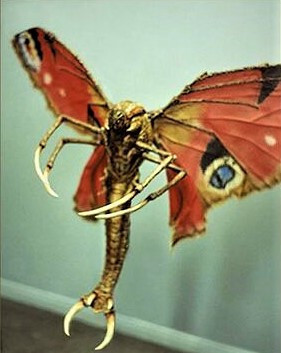
The KNB EFX Group, founded by Robert Kurtzman, Howard Berger, and Nicotero, was hired just three weeks before the start of principal photography, and some of their work, in the form of three mangled corpses, was required during the first week of shooting. “The script was specific about what (the bodies) looked like: purple, bruised and bloated-almost as though compressed by a tremendous weight,” said Nicotero. “We took it literally and did head castings, then re-sculpted them to cave in their heads and flatten their features to make them look crushed. We did a bunch of different bodies. There is a scene where a character walks into a hotel room and you see this beautiful woman from the back, lying in bed. A beautiful body and legs, and then you walk around and see that she is completely crushed in front.”
The next challenge was the prehistoric moths. “That sequence, for me, was one of the most interesting things,” said Nicotero. “The idea of a moth attacking you doesn’t sound very threatening, so we added elements to make it look more like a dragon-fly, with a big tail, two pincers, and long, spindly finger-nails. We wanted you to get the idea that it could do some damage.”
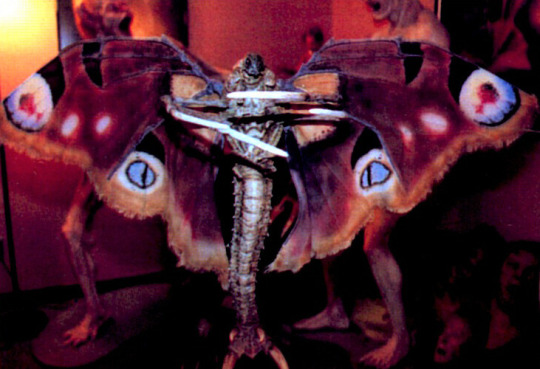
As sculpted by Evan Campbell, the dachshund-sized moths were given menacing demon heads and extended scorpion-like stingers. The mechanical armature supporting the foam latex outer skin was engineered and built by Larry Odien. Three moths were built. The first, not articulated, was used for shots in which the moth attaches itself to one character’s face. Moving wings were later added using computer animation. The second, a rod puppet with a cable-articulated head and stinger-pincers, was used for close ups. The third was a flying version, equipped with a tiny motor that moved the creature’s silken wings. The puppet was suspended by wires that also served to bring the electrical current to the motor, preventing the need to mount a large, heavy battery within the creature.
“The wings were airbrushed flesh-color spandex to make them look moth-like,” said Nicotero. “We could only get the wings to move so fast before it shook the entire mechanism, so we shot it at 12 frames-per-second to double the speed of the wings. It looked really neat. We even did a test at four frames-per-second, and the wings were just a blur.” The flying moth was shot before a blue screen and latter composited into background footage, making the different frame rate possible.
In the scene, the characters, trapped inside a small chapel, are shocked to learn the creature is in their midst, in the form of a friendly dog. In a sequence that combines practical and CGI effects, a stinger erupts from the dog’s back, flies through the air, and imbeds itself in a character’s head.
The sequence required three different artificial dogs (a Labrador was ultimately chosen), each used for a different stage in its transformation from dog to liquid. “We did a shot where one character is petting the dog, and you see the back of the dog wiggle a little bit and then this tentacle rips out. That dog matched the real dog, and then the stinger shoots through the air and the dog is wriggling and shriveling as this genetic material is pumped into the character and out of the dog. So stages two and three were two different sculptures by a Norman Cabrera. Each has air bladders and goo-tubes to pump the black goo.”
To create the artificial dogs, the artificial body was fabricated around the mechanics of the stinger. To cover the sculptures with fur, fur-like fabric was covered with masking tape; then the hair was shaved from the fabric backing. The hair was then glued directly onto the sculpted canines. When the glue had set, the masking tape was removed, with the hair trimmed and styled.
The appearance of the Ancient Enemy went through several incarnations. “The director and producer’s concept of the creature changed,” said Nicotero. “Initially it was described as an undersea crustacean-like creature. Then it was more of an ethereal being, so we did a bunch of different designs for the last stage of the creature. The creature shape shifts throughout the movie—one minute a human being, another a prehistoric moth but none of them are apparent in its final form.”
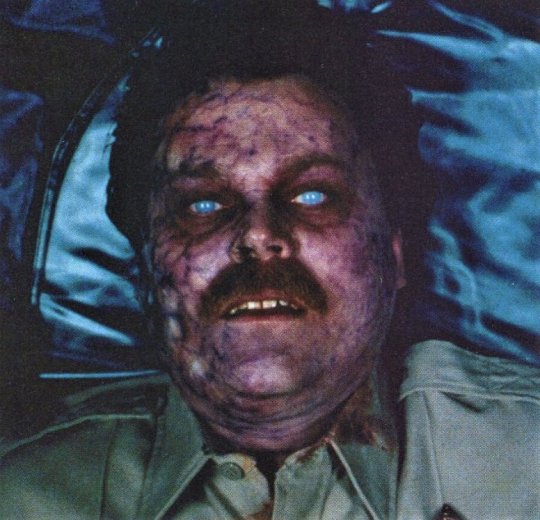
KNB was also required to create a couple of sequences where “black ooze goes against gravity and trails up someone’s body,” one of the more ingenious moments ended up being abandoned early on, according to Nicotero. “Tom Rainone devised this idea from an early draft that after people are absorbed by the creature and reformed, they would be slightly off,” the artist explains. “Perhaps a jaw would be sideways or something like that. So we went for this Lucio Fulci zombie look. Once we started shooting, though, the concept for the creature was constantly changing and a couple of people said, ‘If this creature has been around for so long and it’s so intelligent, why wouldn’t it be able to just form them completely normally?’ So that idea got scrapped. This project was constantly evolving, and many of the conceptual ideas hadn’t been completely fleshed out; we were doing that as we were shooting. Some ideas we came up with remained, and others got dropped and we came up with better ones.”
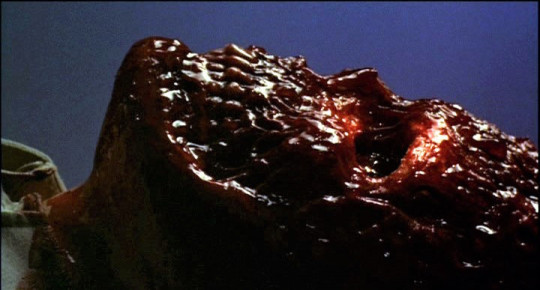
Steve Johnson’s X.F.X In conceptualizing the ultimate incarnation of the Ancient Enemy, Steve Johnson pushed for something even beyond the expectations of the writer or director. “No matter how skilled the writer and director are, they don’t conceive of never before-seen effects. If they are willing to leave their minds open to a number of notions, then I can take that, twist it around, look at it from different angles, and come back with techniques that haven’t been seen before, that are do-able within time and budget restraints.”
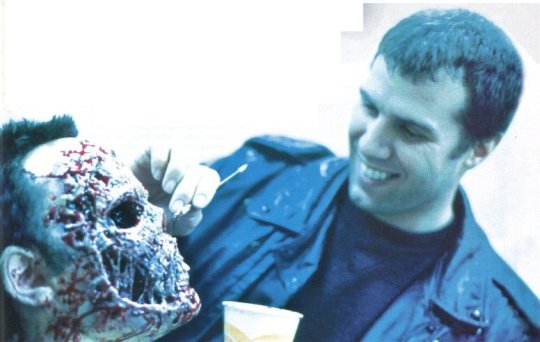
Steve Johnson’s XFX contributed the climactic sequence that begins with a phantom of the Ancient Enemy having his legs shot off. From the severed torso, tentacles extend to drag the still living character across the floor. Cornered, the heroes blast through the ceiling to the attic. When the head of their pursuer appears in the opening, they shove the barrel of their shotgun into its mouth and blow the head apart. From there, the Ancient Enemy morphs into its final incarnation.
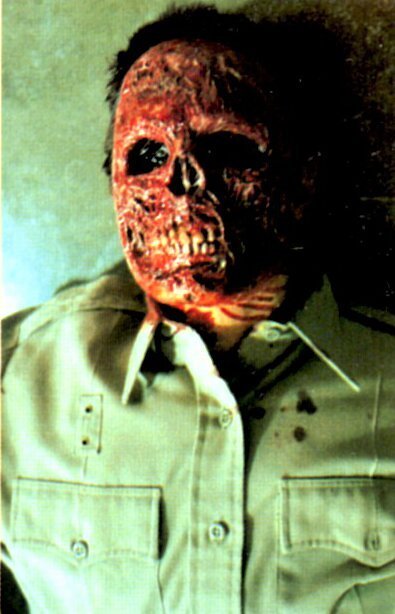
To create the appearance of a character being dragged forward by tentacles, Johnson, working with Chappelle, utilized a raised set with a slot cut in the floor. The actor could stand in this slot and, fitted with a false severed torso and motorized tentacles, move along it. To cover the opening behind and in front of the actor, moving slats of material identical to the floor were inserted and moved along with the actor. With the floor painted a dark color to disguise the slot, the result is a moving “hole” along which the actor can walk. To lend a bizarre look to the creature’s movements, the entire sequence was shot in reverse-action with the camera upside down. Thus, the filmed action of the actor moving backwards dragging the tentacles will appear as the character moving forward being dragged by the tentacles.
Several artificial heads were used to create the illusion of the character’s head being shot and then regenerating itself. Filmed in several different shots, each using a different head, the Ancient Enemy’s black tendrils seem to reach out from the blasted skull. To create the expanding element, one false torso was equipped with several empty bladders. This time both the set and the camera were inverted, and the pull of gravity used to fill each bladder with liquid in sequence. The result is a bloom of petals expanding from the character’s brain cavity, and additional growths sprouting from the petals. “It’s very effective,” said Johnson. “Any time you tilt the camera as well as the set you screw the audience up. They have no point of reference. You’re playing with gravity, one of the most fundamental principles on earth.”
As the Ancient Enemy leaves the phantom-character it created, the remaining human shell melts away. To create this effect, Johnson’s team used a Styrofoam bust of the actor’s torso and sprayed it with acetone to liquefy it. According to Johnson, there was just one problem: “What do you do with the shirt? If the clothes are as much an illusion as the flesh, they have to deteriorate with the flesh. We racked our brains. Finally, we spun up some cotton candy made with brown sugar to achieve a khaki color. We were able to create flat sheets of cotton candy fabric and, on the set, cut it out in the pattern of a shirt, complete with wrinkles and buttons.” The candy-fabric, made primarily of sugar, dissolved as handily as the Styrofoam.
The sequence culminates in the final incarnation of the Ancient Enemy. The producers and effects artists involved debated the look of the creature, as well as the potential use of computer imaging to create it. Ultimately, more conventional techniques were employed. “We’re tired of CGI that doesn’t fit the usage,” said Johnson. “We brain-stormed on what would blow the audience away better than CGI. We did some sketches and came up with a very multi-layered translucent creature.”
youtube
Taking a page from Italian Renaissance painting, in which some characters were comprised of the accumulated parts of others, the Ancient Enemy will appear to be composed of the twisted bodies of the townsfolk it has killed. The coalescing effect, when the townsfolk merge together, was executed with computer animation, but the final creature itself was realized by a rod puppet, filmed against a green screen, and then matted into the background plates. To give the creature a weightless, ethereal look, the puppet was filmed inverted in a large water tank. By filming the action upside-down, the many wispy elements of the puppet appear to float gracefully. “Water lends an otherworldly quality to the movement,” said Johnson. “The tendrils coming off it will flow like a sea anemone or sea grass. The (body) of the monster will be filled with water and different liquids so they will create swirling colors inside it.”
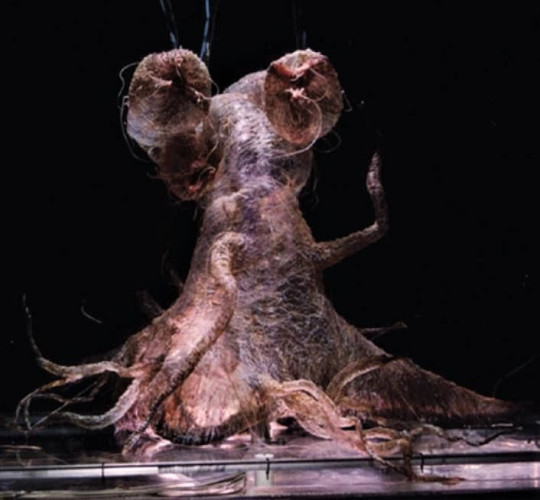
The unused air-bag puppet of the final creature
SOUNDTRACK/SCORE Phantoms (1998) David Williams
youtube
CAST/CREW Directed Joe Chappelle
Produced Dean Koontz Bob Weinstein Harvey Weinstein
Screenplay Dean Koontz
Based Phantoms by Dean Koontz
Peter O’Toole as Dr. Timothy Flyte Rose McGowan as Lisa Pailey Joanna Going as Jennifer Pailey, M.D. Liev Schreiber as Deputy Stuart ‘Stu’ Wargle Ben Affleck as Sheriff Bryce Hammond Nicky Katt as Deputy Steve Shanning Clifton Powell as Gen. Leland Copperfield Rick Otto as Scientist Lockland Valerie Chow as Scientist Yamaguchi Adam Nelson as Scientist Burke John Hammil as Scientist Talbot John Scott Clough as Scientist Shane
K.N.B. EFX Group Steve Johnson’s X.F.X
CREDITS/REFERENCES/SOURCES/BIBLIOGRAPHY Cinefantastique-v29n04 Fangoria#168
Phantoms (1998) Retrospective SUMMARY Dr. Jennifer Pailey brings her sister Lisa to the resort town of Snowfield, Colorado, a small ski resort village nestled in the Rocky Mountains where Jenny works as a doctor.
0 notes
Photo

Fossil Foraminifera Nummulites laevigatus – Eocene Cuisian Stage, Aisne Valley France – Genuine with COA
Presenting an exquisite fossil specimen of the foraminifera Nummulites laevigatus, a prehistoric marine microorganism from the Eocene epoch. This fossil dates specifically to the Cuisian stage and was discovered in the Aisne Valley near Soissons, France – an area renowned for its well-preserved Paleogene fossils.
Nummulites are large, lenticular foraminifera that thrived in warm shallow seas around 50 million years ago. Their intricate calcareous shells, composed of numerous chambers, are highly prized by both amateur and professional collectors for their scientific importance and distinctive, coin-like appearance (from which the genus gets its name, derived from "nummulus," Latin for "little coin").
Item Details:
Species: Nummulites laevigatus (sometimes referred to as laengryus)
Age: Eocene Epoch, Cuisian stage (~50 million years old)
Location Found: Aisne Valley, Soissons, France
Condition: 100% genuine fossil specimen with exceptional preservation
Scale: Scale cube in photo is 1cm – please refer to image for full size
Photography: What you see is what you get – the exact specimen pictured is the one you will receive
Packaging: Secure and protective packaging
This fossil is an excellent addition to any collection of microfossils or paleontological specimens and is ideal for educational use, display, or gifting. It comes with a Certificate of Authenticity to verify its provenance and authenticity.
We take pride in selecting only high-quality, well-preserved fossils. Each item is handpicked to ensure it meets our rigorous standards.
#Nummulites fossil#foraminifera fossil#Eocene fossil#Cuisian stage#Aisne Valley fossil#Soissons fossil#French fossil#microfossil#marine fossil#fossil specimen#genuine fossil#fossil with certificate#fossil from France#fossil for collection#paleontology#natural history
0 notes